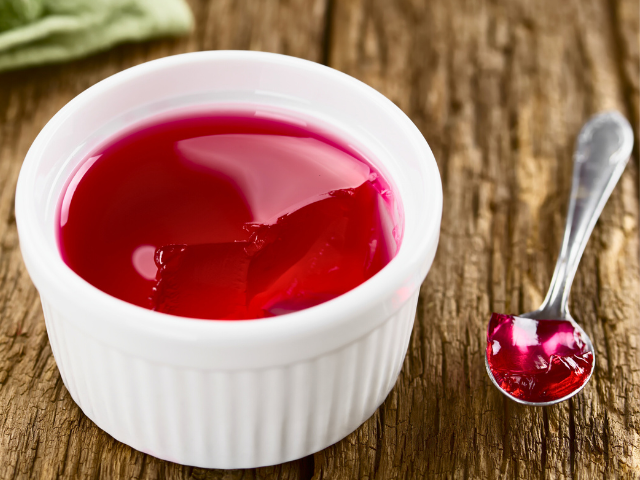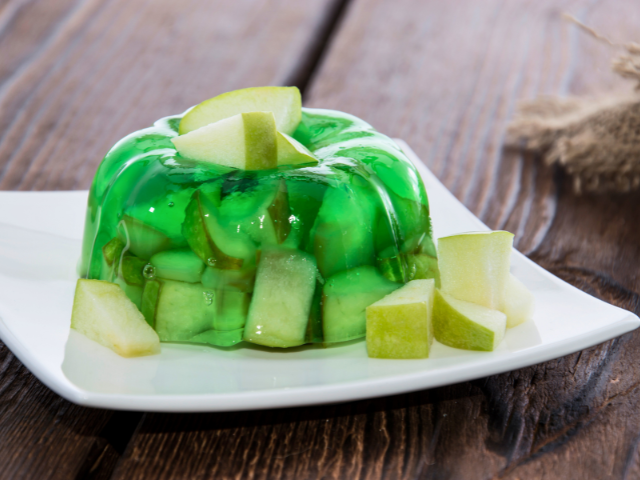Jello can be a fun treat for dogs, but it has both risks and benefits. Understanding these can help you make the best choices for your furry friend.
Jello contains ingredients like sugar and gelatin, which can affect dogs differently. Some dogs may love the taste and find it enjoyable. Others might face health issues, like allergies or stomach problems.
What Exactly Is Jello Made Of?
Jello is a popular dessert, but its ingredients can affect your dog’s health. Some components can be harmful, while others may offer benefits. Let’s explore the main ingredients in Jello and their effects on dogs.
Gelatin: What It Is And Its Impact
Gelatin is the main ingredient in Jello. It comes from animal collagen. Collagen is found in bones and skin. Some dogs benefit from gelatin. It can help with joint health and digestion. Here are some key points:
- Gelatin is a source of protein.
- It can aid digestion.
- May support joint health.
- Usually safe for dogs in small amounts.
However, not all dogs should eat gelatin. Dogs with certain allergies may have reactions. Always consult your vet if unsure. Below is a simple table showing gelatin’s benefits:
| Benefit | Description |
|---|---|
| Protein Source | Provides essential amino acids. |
| Digestive Aid | Helps with gut health. |
| Joint Support | May reduce joint pain and improve mobility. |
In moderation, gelatin can be a fun treat for dogs. Watch for any signs of allergies.
Sugar And Artificial Sweeteners
Sugar is another common ingredient in Jello. It adds sweetness but is not good for dogs. Too much sugar can lead to weight gain. It can also cause dental issues. Some Jello may contain artificial sweeteners like xylitol. This sweetener is very dangerous for dogs. Here’s what to know:
- Excess sugar can lead to obesity.
- Sugar can cause tooth decay.
- Xylitol is toxic to dogs.
- Always read labels carefully.
Natural sweeteners like honey are safer. They can be a better option for dog treats. Stick to small amounts if you choose to add sweetness. Always prioritize your dog’s health over taste.
Artificial Colors And Flavors
Jello often has bright colors and flavors. These come from artificial sources. While they make Jello look appealing, they can harm dogs. Some artificial colors may cause allergies. Others can lead to digestive issues. Here are some points to consider:
- Artificial colors may not be safe.
- Can cause allergic reactions in some dogs.
- May lead to hyperactivity in sensitive dogs.
- Natural alternatives are safer.
Many natural ingredients can add color. For example, beet juice can be a safe alternative. It is always best to avoid artificial additives.

Is Jello Safe For Dogs? The Key Ingredients Breakdown
Some ingredients in Jello are safe in small amounts, while others can cause health issues.
Gelatin: Generally Considered Safe
Gelatin is the main ingredient in Jello. It comes from animal collagen and is often used in many dog treats. When given in small amounts, gelatin is generally safe for dogs. Here are some benefits:
- Supports joint health.
- Improves digestion.
- Can help with skin and coat health.
However, moderation is key. Too much gelatin can upset a dog’s stomach. Monitor your dog after giving Jello to see how they react. If they show signs of discomfort, stop giving it.
The Problem With Sugar For Dogs
Sugar is another common ingredient in Jello. Many dogs love sweet treats, but sugar can be harmful. Here are some reasons why:
- Can lead to obesity.
- May cause dental problems.
- Can contribute to diabetes.
Dogs do not need sugar in their diet. It offers no nutritional value. Even small amounts can cause health issues over time. Always check the sugar content in Jello before sharing it with your dog.
Why Artificial Sweeteners Are Toxic
Many Jello products use artificial sweeteners. Some of these can be very toxic to dogs. Xylitol is one of the most dangerous. It can cause:
- Rapid insulin release.
- Severe drops in blood sugar.
- Liver failure in extreme cases.
Signs of xylitol poisoning include:
- Vomiting.
- Weakness.
- Seizures.
Always read labels carefully. Avoid any Jello that contains artificial sweeteners. Stick to natural options to keep your dog safe.
The Concerns With Artificial Colors And Flavors
Jello often contains artificial colors and flavors. These additives enhance appearance and taste but can be harmful. Some concerns include:
- Allergic reactions.
- Hyperactivity in some dogs.
- Potential long-term health risks.
Natural colors and flavors are safer options. Ingredients like beet juice or carrot puree are healthier choices. Always opt for Jello without artificial additives. Read the labels carefully to ensure your dog’s safety.
Potential Risks Of Feeding Jello To Dogs
Jello may seem harmless, but it can lead to various health issues for our furry friends.
Digestive Upset And Diarrhea
Dogs have sensitive digestive systems. Introducing jello can cause upset stomachs. Ingredients in jello, like sugar and artificial flavors, may irritate a dog’s gut.
Signs of digestive upset include:
- Nausea
- Vomiting
- Diarrhea
Diarrhea can lead to dehydration. This is especially concerning for small dogs. Always monitor your dog after giving them jello. If symptoms persist, consult a vet.

Blood Sugar Spikes
Jello often contains high amounts of sugar. Feeding sugary foods to dogs can lead to rapid blood sugar spikes. This can be especially harmful for diabetic dogs.
High blood sugar can result in:
- Increased thirst
- Frequent urination
- Fatigue
Regularly feeding jello can lead to long-term health issues. Obesity and diabetes are serious concerns. Keeping treats low in sugar is best. Always check labels before sharing jello with your dog.
Consider this simple guide:
- Check sugar content: Aim for low or no sugar options.
- Portion control: Limit the amount of jello given.
Toxicity From Artificial Sweeteners
Xylitol is a common artificial sweetener. It is very toxic to dogs. Even small amounts can cause severe health problems.
Symptoms of xylitol poisoning include:
- Vomiting
- Lethargy
- Seizures
Xylitol causes insulin release, leading to low blood sugar. This can be life-threatening. Always check ingredients before offering jello to your dog. Avoid any product that lists xylitol.
Allergic Reactions
Some dogs may have allergies to certain ingredients in jello. While rare, allergic reactions can occur. Common allergens include:
- Gelatin
- Flavorings
- Preservatives
Signs of an allergic reaction may include:
- Itching
- Swelling
- Hives
Always introduce new foods slowly. Watch for any signs of allergies. If symptoms appear, stop feeding jello and consult a vet immediately.
Are There Any Potential Benefits Of Jello For Dogs?
While jello might seem like a fun treat, it has both risks and benefits. Understanding these can help you decide if it’s right for your furry friend.
Hydration
One potential benefit of jello for dogs is hydration. Jello contains water, which can help hydrate your dog. However, the hydration from jello is minimal. Here are some key points to consider:
- Jello is mostly water, but it also has sugar.
- High sugar content can lead to health issues.
- Water is the best option for hydration.
To put it in perspective, here’s a small comparison:
| Item | Water Content |
|---|---|
| Jello | About 90% water |
| Fresh Water | 100% water |
It’s clear that while jello offers some hydration, it is not a substitute for fresh water. Always ensure your dog has access to clean drinking water. The minimal hydration from jello should not replace their primary source of fluids.
Protein From Gelatin
Another point to consider is the protein from gelatin in jello. Gelatin is made from animal collagen. It does provide some protein, but the amount is negligible for dogs. Here are some facts:
- Gelatin is not a complete protein.
- Dogs need various proteins for overall health.
- Other foods offer better protein sources.
For instance, here’s a simple comparison of protein sources:
| Food | Protein Content (per 100g) |
|---|---|
| Chicken Breast | 31g |
| Jello (with Gelatin) | 1g or less |
While gelatin can be a fun addition, it does not provide enough protein for dogs. Focus on providing high-quality protein from meat, fish, or dog food. Jello should be an occasional treat, not a protein source.


